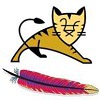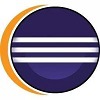【iOS】UIViewController基类的实现
继承是面向对象编程语言的三大特性之一,写好基类会给App的开发带来极大的方便。在iOS开发中,一般一个页面就对应一个ViewController,ViewController在开发中用的也很多,写一个好的ViewController的基类,会让开发变得轻松很多。
可以写一个BaseViewController,继承自UIViewController,在这里可以实现一些整个项目里ViewController的公共方法,最常用的就是导航栏相关的。一般App在设计的时候,导航栏的风格都比较同意,导航栏相关的方法可以放在基类里面实现,然后让其他的功能ViewController继承BaseViewController,这样导航栏部分就不用每个界面都处理了。
下面是我自己写的一个BaseViewController,具体的实现也要看App的主要功能,基类一般实现共性的功能,代码仅供参考,有更好建议的也欢迎评论留言交流。
BaseViewController.h代码:
#import <UIKit/UIKit.h>
@interface BZBaseViewController : UIViewController
//返回按钮
@property(nonatomic,strong) UIButton * backButton;
//导航栏标题
@property(nonatomic,strong) UILabel * navigationTitleLabel;
//导航栏右按钮(图片)
@property(nonatomic,strong) UIButton * rightButton;
//导航栏右按钮(文字)
@property(nonatomic,strong) UIButton * rightTextButton;
//为了灵活的满足不同的ViewController,将set方法放到.h文件,供子类调用
-(void)setupNavigationItem;
-(void)setBackButton;
-(void)setRightButton;
-(void)setNavigationTitleLabel;
-(void)setRightTextButton;
//返回按钮和右按钮点击方法,如果需要实现不同的方法,子类可以重新该方法
-(void)navBackClick;
-(void)navRightClick;
-(void)navRightTextClick;
@endBaseViewController.m代码:
#import "BZBaseViewController.h"
@interface BZBaseViewController ()
@end
@implementation BZBaseViewController
- (void)viewDidLoad {
[super viewDidLoad];
// Do any additional setup after loading the view.
//ViewController的背景颜色,如果整个App页面背景颜色比较统一,建议在这里设置
self.view.backgroundColor = COLOR_COMMON_LIGHTGRAY;
//设置导航栏
[self setupNavigationItem];
self.navigationController.navigationBar.translucent = NO;
self.navigationItem.hidesBackButton = YES;
if (iOS11) {
//scrollerView在导航栏透明时不下压
[[UIScrollView appearance] setContentInsetAdjustmentBehavior:UIScrollViewContentInsetAdjustmentNever];
}else{
self.automaticallyAdjustsScrollViewInsets = NO;
}
}
-(void)setupNavigationItem{
//导航栏背景
UIImage * image = [[UIImage imageNamed:@"img_navigationbar_bg"]
resizableImageWithCapInsets:UIEdgeInsetsMake(-1, 0, 0, 0) resizingMode:UIImageResizingModeStretch];
[self.navigationController.navigationBar setBackgroundImage:image forBarMetrics:UIBarMetricsDefault];
}
-(void)setBackButton{
//设置返回按钮
UIBarButtonItem * backBarButton = [[UIBarButtonItem alloc] initWithCustomView:self.backButton];
self.navigationItem.leftBarButtonItem = backBarButton;
}
-(void)setRightButton{
//设置右按钮(图片)
UIBarButtonItem * rightBarButton = [[UIBarButtonItem alloc] initWithCustomView:self.rightButton];
self.navigationItem.rightBarButtonItem = rightBarButton;
}
-(void)setRightTextButton{
//设置右按钮(文字)
UIBarButtonItem * rightBarButton = [[UIBarButtonItem alloc] initWithCustomView:self.rightTextButton];
self.navigationItem.rightBarButtonItems = @[[self getNavigationSpacerWithSpacer:0],rightBarButton];
}
-(void)setNavigationTitleLabel{
//设置标题
self.navigationItem.titleView = self.navigationTitleLabel;
}
-(UIBarButtonItem *)getNavigationSpacerWithSpacer:(CGFloat)spacer{
//设置导航栏左右按钮的偏移距离
UIBarButtonItem *navgationButtonSpacer = [[UIBarButtonItem alloc]
initWithBarButtonSystemItem:UIBarButtonSystemItemFixedSpace
target:nil action:nil];
navgationButtonSpacer.width = spacer;
return navgationButtonSpacer;
}
#pragma mark - lazy 各控件的初始化方法
-(UIButton *)backButton{
if (!_backButton) {
_backButton = [UIButton buttonWithType:UIButtonTypeCustom];
_backButton.frame = CGRectMake(0, 0, 50, 40);
[_backButton setImage:[UIImage imageNamed:@"button_nav_back"] forState:UIControlStateNormal];
_backButton.titleLabel.font = [UIFont systemFontOfSize:17];
[_backButton setContentEdgeInsets:UIEdgeInsetsMake(0, -40, 0, 0)];
[_backButton addTarget:self action:@selector(navBackClick) forControlEvents:UIControlEventTouchUpInside];
}
return _backButton;
}
-(UIButton *)rightButton{
if (!_rightButton) {
_rightButton = [UIButton buttonWithType:UIButtonTypeCustom];
_rightButton.frame = CGRectMake(0, 0, 40, 40);
[_rightButton addTarget:self action:@selector(navRightClick) forControlEvents:UIControlEventTouchUpInside];
}
return _rightButton;
}
-(UIButton *)rightTextButton{
if (!_rightTextButton) {
_rightTextButton = [UIButton buttonWithType:UIButtonTypeCustom];
_rightTextButton.frame = CGRectMake(0, 0, 60, 40);
_rightTextButton.titleLabel.font = [UIFont systemFontOfSize:17];
[_rightTextButton addTarget:self action:@selector(navRightTextClick) forControlEvents:UIControlEventTouchUpInside];
}
return _rightTextButton;
}
-(UILabel *)navigationTitleLabel{
if (!_navigationTitleLabel) {
_navigationTitleLabel = [[UILabel alloc] initWithFrame:CGRectMake(0, 0, SCREEN_WIDTH - 150, 30)];
_navigationTitleLabel.font = [UIFont systemFontOfSize:17];
_navigationTitleLabel.textColor = [UIColor whiteColor];
_navigationTitleLabel.textAlignment = NSTextAlignmentCenter;
}
return _navigationTitleLabel;
}
#pragma mark - click 导航栏按钮点击方法,右按钮点击方法都需要子类来实现
-(void)navBackClick{
[self.navigationController popViewControllerAnimated:YES];
}
-(void)navRightClick{
}
-(void)navRightTextClick{
}
写好基类之后,让其他页面继承于该基类,导航栏相关的设置直接调用这里面的方法即可,子类主要用来写自己的功能性代码就好,用起来也是很方便的。
当然如果要开发的App每个页面的导航栏差异比较大,UI风格也相差比较大的话可能就不太实用了,合适的才是最好的,需不需要基类、需要什么样的基类还是看具体项目。希望能给开发的小伙伴们带来帮助。




